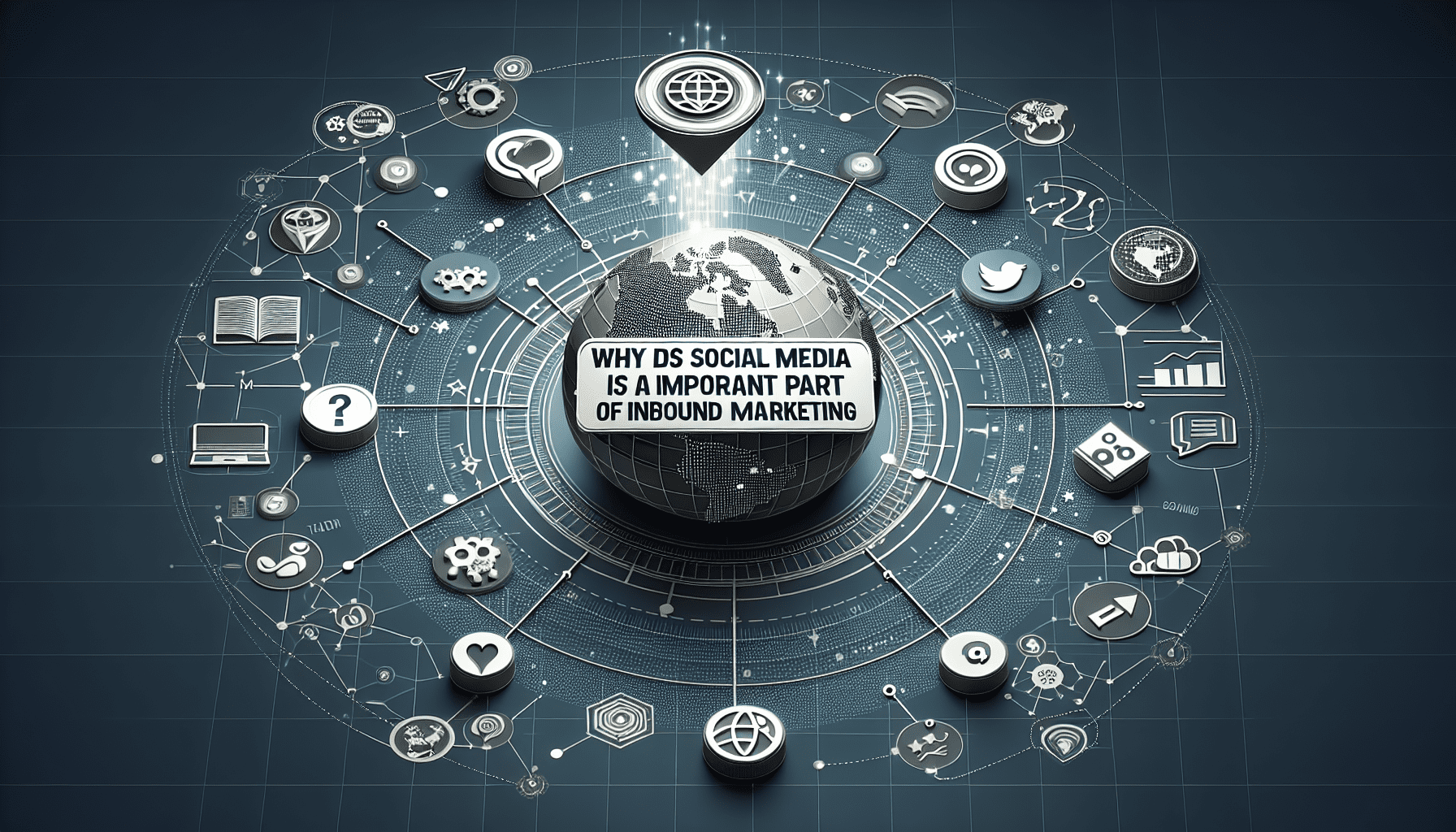
Introduction
In today’s digital-first environment, brands constantly seek innovative strategies to attract and engage customers. Inbound marketing, a methodology focused on drawing customers through relevant and helpful content, finds a perfect partner in social media platforms. Social media networks provide the stage for content dissemination and foster interactive engagement and community building. This synergy enhances brand visibility, improves customer relationships, and contributes to the success of inbound marketing strategies. Through these channels, businesses can connect with a broader audience at a lower cost than traditional marketing methods.
Importance of Social Media in Inbound Marketing
 Image courtesy: Unsplash
Image courtesy: Unsplash
Social media has become an indispensable tool in inbound marketing strategies. It provides a dynamic platform for businesses to broadcast their message to a global audience, creating avenues for direct communication and personalized interaction that traditional marketing channels often lack.
Increased Brand Visibility
The expansive reach of social platforms allows brands to enhance their visibility and recognition. Every post shared, every comment made, and every engaging story told can reach an ever-growing audience. This multiplied visibility not only helps boost the brand’s market presence but also enables it to imprint its identity across various demographics and geographic regions. The viral nature of social media content—whether through shares, likes, or tweets—can expedite brand exposure exponentially, often with minimal financial investment.
Enhanced Customer Engagement
Social media stands out in its ability to foster a two-way conversation between businesses and customers. Platforms offer the opportunity for customers to engage with brands through comments, messages, and reviews. This direct interaction builds customer service and engagement that can enhance consumer trust and loyalty. Additionally, social media allows targeting specific audience segments with personalized content, which means that businesses can tailor their messages according to the preferences and behaviors of their followers, leading to higher engagement rates.
Leveraging Social Media Platforms for Inbound Marketing
Different social media platforms cater to varied audience demographics and preferences, offering unique opportunities for targeted inbound marketing strategies. Understanding each platform’s strengths and typical audience can help businesses optimize their social media initiatives.
With its extensive user base, Facebook offers a versatile platform for inbound marketing. Businesses can utilize its detailed advertising targeting options, a wide range of posting formats from images to long-form videos, and robust interaction features like groups and live broadcasts. This versatility makes it an excellent platform for delivering tailored content, launching new products, and driving website traffic. The platform’s analytics tools also provide valuable insights into audience behavior, helping marketers refine strategies continuously.
Known for its visual appeal, Instagram is pivotal for brands targeting younger demographics. This platform is ideal for high-quality imagery, storytelling through reels and stories, and influencer collaborations, which are increasingly popular in modern marketing. The use of hashtags enhances discoverability, while features like shoppable posts directly facilitate e-commerce, making it not just a site for engagement but also for driving sales.
X (Formerly Twitter)
X, formerly known as Twitter, excels as a real-time communication platform. Its fast-paced nature suits brands aiming to stay on top of current trends and engage in public conversations. The brevity required by X’s posting format encourages concise, impactful messaging, which can be crucial during events, crises, or promotions. Furthermore, the platform’s hashtag functionality allows for greater visibility during major happenings and promotional campaigns, making it an invaluable tool for instant public outreach and engagement.
Thus, each social media platform offers distinctive benefits and can be strategically used for varied aspects of inbound marketing depending on a business’s specific goals and target audience. Businesses can significantly enhance their inbound marketing results by effectively leveraging these platforms, achieving higher brand engagement, increased visibility, and a stronger connection with their customer base.
Case Studies: Successful Inbound Marketing through Social Media
HubSpot: Using Facebook for Lead Generation
HubSpot, a leading provider in the health and wellness sector, effectively leveraged Facebook to drive its inbound marketing efforts. By crafting targeted ads and engaging content tailored to their audience’s interests and preferences, they saw an impressive increase in lead generation. Their strategy included:
– Regularly post helpful and informative content related to health tips, wellness routines, and nutritious recipes, positioning the brand as a helpful resource.
– Hosting live Q&A sessions with experts in the field, attracting a larger audience and encouraging interaction.
– Implementing a lead capture form within their posts to seamlessly collect contact information of potential customers.
These tactics enhanced HubSpot’s visibility and created a trustful relationship with its audience, resulting in increased leads.
Glossier: Building Customer Relationships on Instagram
Glossier, a popular beauty brand, used Instagram to build and nurture relationships with its audience, turning viewers into loyal customers. Their approach combined stunning visuals with interactive features native to Instagram, such as stories, polls, and direct messaging. Key aspects of their strategy included:
– Regularly updating their feed with high-quality photos featuring their latest collections, styled by influencers and loyal customers.
– Engaging directly with followers through comments and personalized responses, making users feel valued and part of the brand community.
– Offering exclusive behind-the-scenes content and sneak peeks on upcoming releases kept the audience engaged and anticipating.
Glossier’s Instagram presence became a cornerstone of customer relationship management, significantly boosting customer loyalty and retention.
Strategies for Integrating Social Media into Inbound Marketing
Content Creation and Distribution
A cornerstone of successful inbound marketing on social media is the creation and distribution of engaging, value-driven content. Brands should focus on understanding their audience’s needs and preferences to create content that appeals directly to them. Effective strategies include:
– Developing a content calendar to maintain a consistent posting schedule that keeps the audience engaged but not overwhelmed.
– Using a mix of content types, such as videos, blogs, infographics, and podcasts, to cater to different preferences and increase the reach across various platforms.
– Utilizing analytics tools to track engagement and tweak the strategy based on what content performs best.
Influencer Partnerships
Incorporating influencer partnerships into your social media strategy can dramatically increase the reach and authenticity of your content. Influencers often have a loyal following, and their endorsement can lend credibility to your brand. Tips for effective influencer collaborations include:
– Choosing influencers whose brand values align closely with yours to ensure a consistent message.
– Collaborating on unique content that can provide mutual benefits, such as co-hosted events or co-created product lines.
– Clearly define the partnership’s goals and expectations from the start to ensure effective alignment and measure success.
Social Listening and Monitoring
Social listening and monitoring are essential for understanding the public perception of your brand, gathering insights into customer needs, and staying ahead of industry trends. This proactive approach can guide your content strategy and help mitigate potential issues. Effective practices include:
– Monitoring mentions of your brand across social platforms to respond quickly to comments, questions, or complaints.
– Analyzing sentiment to understand the emotions behind the conversations about your brand.
– Keeping an eye on competitors to see what works for them that might also work for you.
Implementing these strategies will enhance your social media presence and significantly contribute to your overall inbound marketing success. This will lead to better engagement, stronger customer relationships, and increased sales.
Measuring Success: Metrics for Evaluating Social Media’s Impact on Inbound Marketing
 Image courtesy: Pexels
Image courtesy: Pexels
Understanding the effectiveness of social media in inbound marketing campaigns is crucial for optimizing strategies and allocating resources efficiently. By tracking specific metrics, businesses can gauge how well their social media efforts contribute to their inbound marketing goals.
Engagement Rates
Engagement rates are a fundamental metric in social media analytics. They indicate how actively your audience is involved with your content. This metric includes actions such as likes, shares, comments, and the rate at which users interact with your posts. High engagement rates often suggest that content resonates well with the audience, fostering an environment conducive to organic growth and spreading brand awareness. Tracking this can help you understand which types of content drive interaction and are thus valuable to your strategy.
Conversions
Conversions are the ultimate indicator of social media’s effectiveness in contributing to an organization’s inbound marketing success. This involves tracking how many users take a desired action, such as filling out a form, signing up for a newsletter, or purchasing directly from social media activity. To accurately measure conversions from social media, you can use tracking pixels and UTM parameters to see which platforms are driving leads and at what cost. Companies can fine-tune their social media campaigns by analyzing this data to maximize conversions and cost efficiency.
Return on Investment (ROI)
Calculating the Return on Investment (ROI) is critical to evaluate the financial impact of social media on inbound marketing efforts. ROI helps determine the economic benefits obtained from social media campaigns relative to the amount invested. Consider direct revenue from social media referrals and indirect benefits when calculating ROI. These indirect benefits include improved brand engagement and customer loyalty, which can lead to repeat sales and referrals. Analytics tools like Google Analytics and CRM systems can help track these metrics, providing a clear picture of social media’s financial benefits. Understanding ROI helps justify spending on social media marketing and guides the strategic planning process by highlighting successful tactics and areas for improvement.
Conclusion: The Future of Social Media in Inbound Marketing
The trajectory of social media’s role in inbound marketing is not just onward but also upward. As digital platforms evolve and deeply integrate into consumer behavior, social media will become crucial in crafting compelling inbound strategies. Brands that continue to leverage social media’s expansive reach and ability to engage audiences in real time will find themselves at the forefront of digital marketing success. With advanced analytics and more sophisticated targeting options, companies can anticipate trends and customer needs more quickly than ever.
As we look forward, integrating AI and machine learning into social media tools promises to revolutionize personalized user experiences, making them far more engaging and interactive. For inbound marketing, this means more precise content delivery and better conversion rates. Social media is not merely a tool but a dynamic environment that constantly offers new opportunities for brands to grow their influence and connect genuinely with their audiences. As long as businesses continue to innovate and adapt to their ever-changing landscape, social media will remain integral to successful inbound marketing strategies.